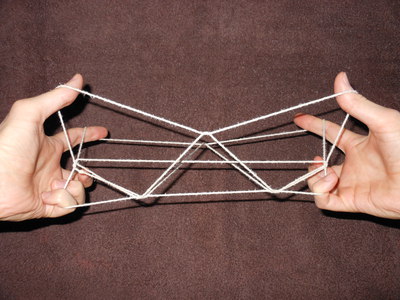
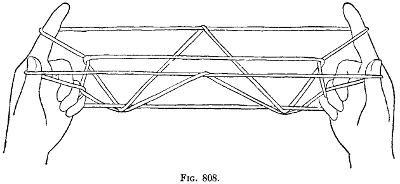
LLX > Neil Parker > String Figures > Jayne


1. Opening A.
2. Pass thumbs over far thumb string and under index loop. Pick up far index strings, and return under near index strings. Release indexes.
3. Transfer little finger loops to thumbs.
4. Insert little fingers from below into lower and middle thumb loops, and then to the far side of the upper far thumb string (that runs straight across). Hook little fingers down over this string, and pull it down through the middle and lower thumb loops.
5. Pass right index finger into upper right thumb loop from above, and toward you between upper right near thumb string and middle right near thumb string. Straighten right index, and release only the upper right thumb loop from the right thumb.
6. The new right far index string goes from the right index to the left thumb. Pass left index under this string, to the left of the loop that hooks over its middle, and return, pulling its loop, and no other, off the left thumb.
7. There are now two near thumb strings: one passing straight between the thumbs, and one going down to the middle of the figure. Remove the straight string only from the thumbs, dropping it on the far side of the thumbs.
Kathleen Haddon ([Ball 1920], [K. Haddon 1930]) reports that among the Tlingit people of the Pacific Northwest, this is only the first stage of a series of figures which she calls "An Alaskan River". The series continues as follows:
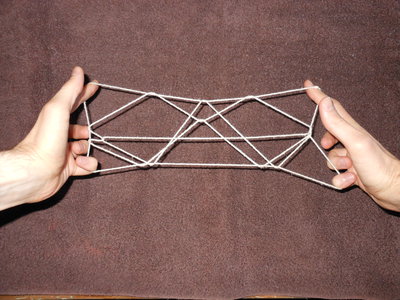
8. Insert middle fingers into index loops from below. Bend indexes and middle fingers toward you, passing middle fingers into thumb loops from above, and indexes to the near side of the near thumb string, so that the near thumb string is pinched between them. Turn indexes and middle fingers away and up, pulling near thumb string through index-middle-finger loops (which slip off), the near thumb string becoming a near index string. Release thumbs.
This represents a river flowing in front of a range of mountains.

9. Each index loop has a string that runs diagonally across it near the index, from the near (top) string to the far (palmar) string. Pass thumbs under these diagonal strings and pick them up. Separate thumbs and indexes widely.
This represents a mosquito that lives near the river.
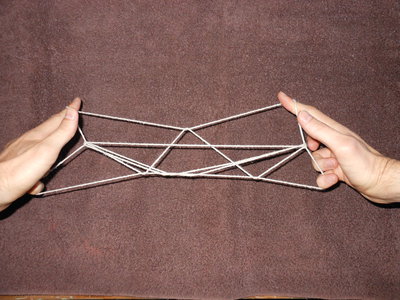
10. Release indexes.
11. Insert indexes into thumb loops from above. Pick up near thumb string, and release thumbs.
This represents the river flowing past a single mountain.
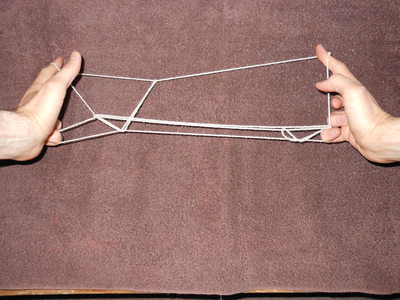
12. With the left thumb, pick up from below the long straight string that runs horizonally across the middle of the figure. Double the left thumb loop by turning the thumb toward you, then down under the left near thumb string, and back up away from you. Insert right thumb from below into both left thumb loops.
13. Pass thumbs into index loops from below. Pull near index strings through thumb loops, which slip off. Release indexes.
14. Transfer thumb loops to indexes.
This represents a man standing up in a boat (on the left), and a salmon (on the right).
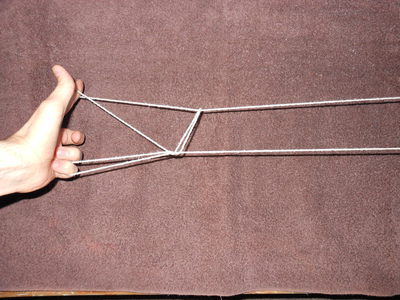
15. Release right little finger.
The fisherman has caught the salmon.
LLX > Neil Parker > String Figures > Jayne